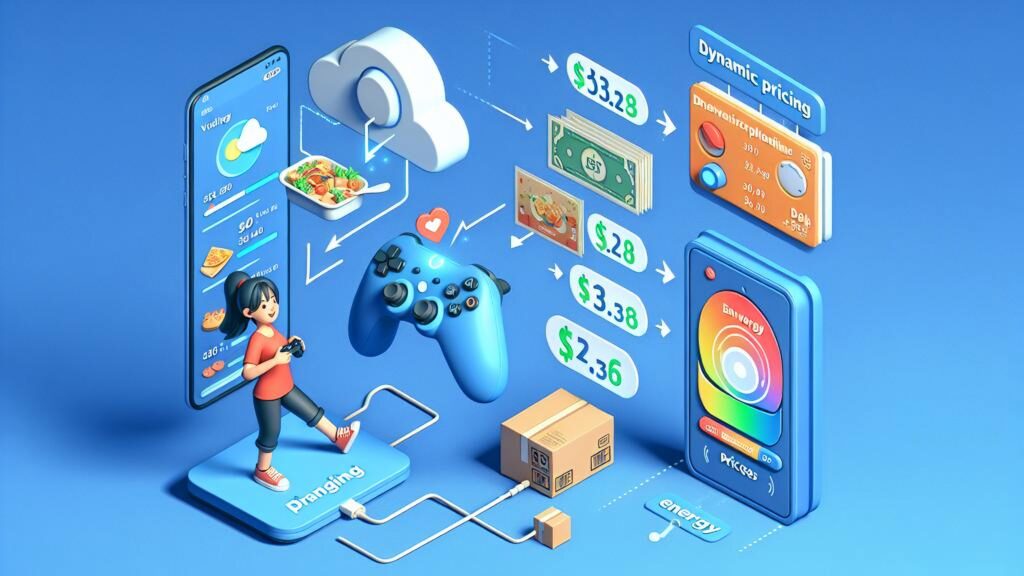Navigating smart meters and dynamic pricing: Are you keeping pace?
It is only logical that a commodity as essential as energy is modernizing its pricing model. In a world where on-demand pricing dominates industries such as cloud computing, video streaming, and food delivery apps, energy pricing must also evolve accordingly.

With the advent of smart meters and the vast amount of data they collect, on-demand pricing for energy consumption is ready to reach its full potential. From a consumer’s perspective, this evolution should be welcomed. The EU agrees and already in 2019 put forward legislation stating:
“Consumers should have the possibility of participating in all forms of demand response. They should therefore have the possibility of benefiting from the full deployment of smart metering systems and, where such deployment has been negatively assessed, of choosing to have a smart metering system and a dynamic electricity price contract. This should allow them to adjust their consumption according to real-time price signals that reflect the value and cost of electricity or transportation in different time periods, while Member States should ensure the reasonable exposure of consumers to wholesale price risk.”
Source: https://eur-lex.europa.eu/legal-content/EN/TXT/PDF/?uri=CELEX:32019L0944
Dynamic pricing, also known as real-time pricing or time-of-use pricing, is essentially the practice of adjusting retail electricity rates based on current wholesale prices in real-time. This exposes end consumers of electricity (partially) to the volatility of the wholesale market. This practice offers numerous benefits for both consumers and energy providers.
Dynamic energy pricing with smart meters provides the opportunity for consumers to reduce energy costs by using electricity during off-peak hours when prices are lower. For energy providers, dynamic energy pricing could help manage their demand, by reducing volatility and making things more predictable.

Within the UK, over 30M Smart Meters have been installed and to complement this, the Regulator Ofgem is introducing market-wide half-hourly settlement (MHHS) to ensure that suppliers will face the real “time of use” costs of energy being used by their customers. It sees this as a gamechanger for the energy sector delivering £4.5Bn+ in net benefits as consumers take advantage of dynamic pricing by adjusting their consumption profiles to reduce their bills which in turn reduces peak energy generation demands.
One of the key aspects to deal with when thinking about dynamic pricing is how to manage the massive data overload that will enter the IT systems. In many cases, energy suppliers are struggling with managing this data as many processes are still run via Excel files.
However, dynamic energy pricing with smart meters adds pressure with (near) real-time meter reads and the massive amount of data this brings, putting a lot of stress on these traditionally manual processes. Best case this leads to a delay in the invoicing cycle – in its turn deteriorating the company’s cash and working capital positions. Worst case this means incorrect invoices and hence (very) unhappy customers.
Technology has been the driving force behind these changes, and can also be its solution. As a system provider, Ferranti has welcomed this evolution and is addressing the opportunities that it brings:
Integration – As before, integration remains key to collect, store, and distribute the large data volumes across the system landscape. Market & system interfaces have become the norm and 10+ integrations to make sure all data flows are set up correctly is no exception today.
Flexibility – Being able to change price and tariff plans is a necessity to quickly address market changes. At the same time, one of the benefits of dynamic pricing is being able to personalize energy consumption. A flexible pricing engine allows for this.
UX – Front office and back office teams are craving a sensible user experience to help them execute their processes. Sales agents should be able to easily create quotes, using the available data and calculations, from start to finish: creating an opportunity all the way up to getting the quote to the customer. At the same time, the back office has a centralized overview and access to all formulas, configurations, and set-ups.
Customer proximity – In a market where consumers have never been more eager to switch energy suppliers, a swift, error-free experience makes a sensible difference for them.
There is no denying the critical importance of dynamic pricing. MECOMS 365 provides essential support through its comprehensive system capabilities.Our platform integrates seamlessly with market and system interfaces via our MECOMS enterprise extensibility platform (MEEP), ensuring that large volumes of data from smart meters are efficiently collected, stored, and processed. The MECOMS Smart Volume Stream (SVS) gathers detailed consumption data, which can be aggregated into various time frames, allowing for precise and flexible pricing.

Dynamic energy pricing with smart meters is fully supported by the MECOMS 365 Pricing Engine, which utilizes this data to perform complex pricing breakdowns based on real-time market conditions. This ensures that both consumers and providers can benefit from accurate and dynamic price adjustments, tailored to actual energy usage patterns.

Ultimately, the most important outcome is delivering accurate, timely invoices. MECOMS 365 ensures that the calculated prices are seamlessly transferred to the billing system, whether it’s our own MECOMS 365 CIS solution or integrated with a third-party application.
Dynamic pricing and its implications are not just trends. It is a natural evolution in the energy sector. It’s how consumers can finally have on-demand pricing for energy. With the right tools and strategies, utility companies can overcome the challenges and reap the benefits. At Ferranti, we are committed to helping our clients navigate this change.